Paying for College: A Comprehensive Guide – Part 2
Understanding the FAFSA® College Aid Form
For those who need financial assistance paying for college, the Free Application for Federal Student Aid (FAFSA) form is required and is now available for completion. This form is used to assess your financial need, and to give you options for funding college. Administered by the Department of Education, it is sent to your college’s financial aid office so that it can be determined how much you can afford to pay for school. It is required every academic year that you receive financial assistance.
What Your Expected Family Contribution Means when Paying for College
Once the FAFSA is submitted, a Student Aid Report (SAR) is generated. This form states your Expected Family Contribution (EFC). It is not set in stone—rather, it is simply an estimate of what you will have to pay for school. The number is subtracted from the Cost of Attendance (COA), and the difference will be what you are expected to pay before any student loans. This helps determine what type of funding options you may need. That way, you can choose what works best for your situation.
Who Should Fill Out the FAFSA®?
Anyone who plans on attending a college in the United States should fill out the FAFSA. Even if you don’t need help paying for college, you can still qualify for federal aid. (In fact, you can receive a $1000 College Board Opportunity Scholarship by simply filling out the FAFSA.) Plus, federal loans have better interest rates and repayment terms that most private loans. So, you should get what you can from federal loans before resorting to private financing. Finally, for those interested in merit-based scholarships, the FAFSA will generally be required.
What are the eligibility requirements for the FAFSA?
If you want to attend a 2- or 4-year college or university in the U.S., you must have a high school diploma or GED, and you must be a citizen with a Social Security number. If you are not a citizen, you must be a legal or permanent resident or a U.S. national. Also, anyone who has refugee status, has been granted political asylum, or was born in one of the Pacific Islands is eligible.
What type of financial aid is included on the FAFSA?
The main types of financial aid include federal student loans, federal grants, federal work-study programs and scholarships. (For explanations about the types of financial aid, please refer to our January 1st blog, Paying for College – Part 1) You can also contact us for more information.
What items do I need in order to get help paying for college?
Before you begin, you should log into fafsa.gov to access the FAFSA form. Before you start filling it out, it is best to gather the items you’ll need. These include:
- FSA ID. Before filling out the FAFSA form, you’ll need to create an FSA (Federal Student Aid) ID. This is your username and password. It can be generated on studentaid.gov., the Federal Student Aid website. Keep your ID safe, as this is your digital legal signature, allowing you to complete and update your FAFSA form. Parents and guardians of dependent students will need to create and use their own FSA ID to complete the process. Parents should not create IDs for students, and vice versa. This can cause problems in signing and submitting the FAFSA and can lead to financial aid delays. Since it can take up to three days before you can use your FSA ID, be sure to create your account early.
- Social Security Number. This is required for all U.S. citizens. For those who meet eligibility requirements as noncitizens, Alien Registration numbers are required. Parents and students must provide this information.
- Driver’s License Number. The FAFSA does have a space for entering your driver’s license number. If you don’t have a driver’s license, you can skip this step.
- Federal Income Tax Returns. Both students and parents of dependent students must report 2021 income for the 2023-24 FAFSA. You cannot use your 2022 tax information. Be sure to have your tax return and any pertinent tax forms (IRS W-2) available for reference.
- Records of Untaxed Income. The FAFSA asks questions about untaxed income. This can include child support, interest income, and veterans’ noneducation benefits. Again, you’ll report 2021 information in this section.
- Records of Assets. This includes savings and checking account balances and investments like stocks, bonds, and real estate (not including a primary residence.) For this section, you’ll report current amounts, as opposed to 2021 tax year amounts.
- List of School(s) That Interest You. Add any college you’re considering to this list, even if there’s only a slight chance you’ll apply. You can delete schools later if you don’t apply, but you don’t want to miss out on financial aid just in case. Also, most schools won’t actually offer you aid unless you’ve been accepted. The FAFSA form allows for 10 schools at a time. If you’re applying to more than 10 schools, refer to fafsa.gov for further instructions.
Navigating the college application process and paying for college can be tedious, and this includes filling out financial aid forms. It’s best to get an early start on the FAFSA and refer to the instructions included at fafsa.gov. And as always, contact us at Moxie College Counseling if we can be of any assistance.
Share this article

Follow us
A quick overview of the topics covered in this article.
- Understanding the FAFSA® College Aid Form
- What Your Expected Family Contribution Means when Paying for College
- Who Should Fill Out the FAFSA®?
- What are the eligibility requirements for the FAFSA?
- What type of financial aid is included on the FAFSA?
- What items do I need in order to get help paying for college?
Latest articles
Reading Time : 5 mins
Reading Time : 4 mins
Reading Time : 1 mins




